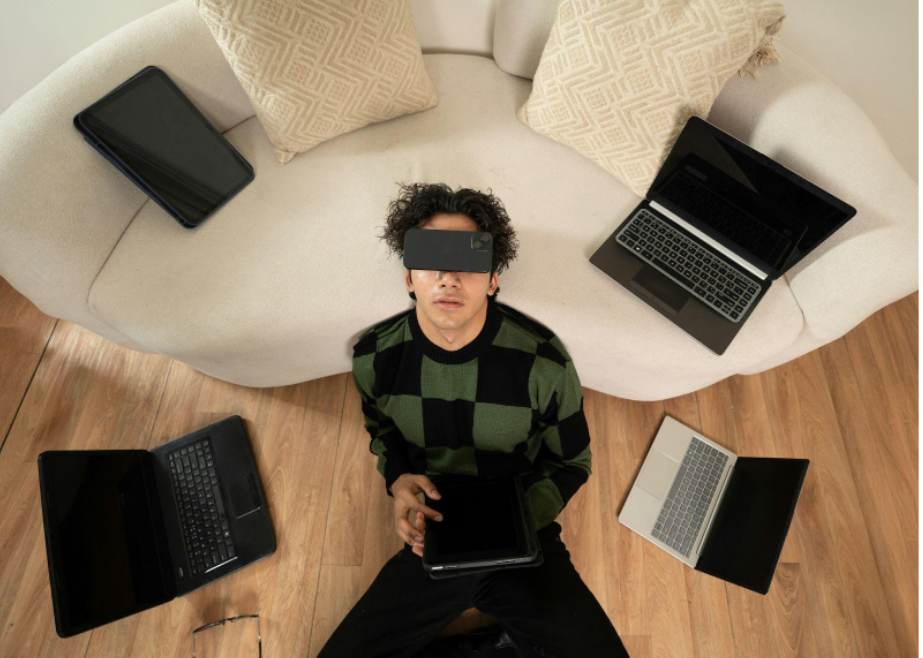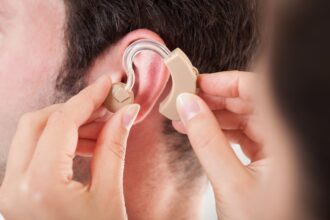After spending most of the day glued to screens—whether for work, socialising, or entertainment—it’s no surprise many of us experience screen fatigue by the evening. Blurry eyes, headaches, tension, and restlessness have become common side effects of our digital lifestyles. Fortunately, building simple after-work rituals can help counterbalance the strain. Even something as soothing as winding down with a Flewd magnesium bath soak can help relax tense muscles, promote better sleep, and reset your mind after hours of scrolling and staring at screens. In this article, we’ll explore seven easy, science-backed strategies to reduce screen fatigue and recharge after a long digital day.
Understand the Real Impact of Screen Fatigue
Before jumping into solutions, it’s important to understand what’s actually happening when you feel exhausted from screen time. Staring at digital devices for long periods strains both the eyes and the brain:
- Blue light exposure suppresses melatonin, making it harder to wind down at night.
- Reduced blinking while staring at screens can cause dry, irritated eyes.
- Poor posture while sitting at desks or holding devices often leads to neck, shoulder, and back tension.
- Mental overstimulation from endless notifications, content feeds, and multitasking taxes your cognitive system.
According to the American Optometric Association, digital eye strain affects around 50% or more of computer users, while the constant cognitive load from switching between apps, tabs, and messages can drain mental energy quickly.
Step 1: Establish a Clear Digital Cut-Off
One of the most effective ways to minimise screen fatigue is to establish a daily “digital curfew” after work hours. This helps the brain disengage from information overload and allows your nervous system to start relaxing.
- Set a cut-off time, ideally 1–2 hours before bed.
- Switch off non-essential devices: phone, tablet, computer, TV.
- Use scheduled ‘Do Not Disturb’ features or app blockers to limit evening screen temptations.
- Instead, plan offline evening activities: reading, puzzles, crafts, or light chores.
Even a short screen break in the evening can significantly improve sleep quality, reduce headaches, and support overall recovery.
Step 2: Build an Eye-Friendly Evening Environment
While many people are aware of blue light’s effect on sleep, few realise how much your home lighting can help counteract it.
- Dim overhead lights after sunset to signal to your brain that it’s time to wind down.
- Use warm, amber-toned light bulbs or lamps in the evening.
- Turn on night mode or blue light filters on all devices that remain in use.
- Light a few candles during your after-work routine to create a naturally calming atmosphere.
Studies show that exposure to bright, cool light in the evening delays melatonin production, making it harder to fall asleep. Creating a soft-light environment helps reverse this and signals your body that rest is approaching.
Step 3: Try a Magnesium-Rich Bath Ritual

Image from Unsplash
Physical tension is a common consequence of extended screen time. Long hours at a desk or slouched on the sofa can leave muscles tight and stiff. That’s where a warm bath infused with magnesium can work wonders.
Magnesium plays a critical role in muscle relaxation, nerve function, and promoting better sleep. A warm soak allows magnesium to absorb through the skin while also easing sore muscles.
Adding a Flewd magnesium bath soak to your evening routine combines the benefits of warmth, relaxation, and mineral replenishment into one calming ritual.
A 20–30 minute soak not only relieves physical tension but creates a strong psychological association with ‘winding down,’ making it easier to disconnect from work-mode.
Step 4: Incorporate the 20-20-20 Rule During Work Hours
While the goal is to reduce screen fatigue after work, prevention during the workday is just as crucial. The “20-20-20 Rule” is a simple eye-strain prevention method recommended by optometrists:
- Every 20 minutes, look away from your screen.
- Focus on something at least 20 feet away.
- Hold your gaze for 20 seconds.
This helps relax the tiny muscles in your eyes that are constantly focusing on close-range objects. Even better? Set reminders on your devices to practice this during long meetings or deep work sessions.
The National Institutes of Health (NIH) confirms that incorporating short visual breaks helps minimise digital eye strain and supports long-term visual health.
Step 5: Stretch Away Screen-Induced Tension
Screen fatigue isn’t just about your eyes. Hours spent hunched at a desk or couch can cause muscular tightness, poor circulation, and stiffness. Incorporating a short evening stretching routine helps release tension and prevent long-term posture issues.
Consider these simple stretches:
- Neck rolls to release cervical tightness.
- Shoulder shrugs and rolls to ease upper back strain.
- Chest openers to counteract forward head posture.
- Gentle forward bends for lower back release.
- Wrist circles to relieve device-hand cramping.
Even 5–10 minutes of mindful movement each evening can dramatically improve how you feel after a digital-heavy day.
Step 6: Practice Breathwork to Calm Overstimulated Nerves
Screen fatigue isn’t purely physical—it’s cognitive too. The constant switching between apps, notifications, and digital inputs keeps your nervous system in a state of low-grade arousal.
Breathwork helps signal your parasympathetic nervous system (the “rest and digest” mode) to calm down. Try these easy techniques:
- Box breathing: Inhale for 4 seconds, hold for 4, exhale for 4, hold for 4. Repeat for 5 minutes.
- 4-7-8 breathing: Inhale for 4 seconds, hold for 7, exhale for 8.
- Mindful breathing: Simply follow your natural breath, observing the inhale and exhale without judgment.
Practicing breathwork after stretching multiplies its calming effects and helps the mind detach from work-related mental loops.
Step 7: Transition into Sleep with Mindful Evening Rituals
A consistent evening routine creates a powerful psychological signal that it’s time to shut down. Over time, this ritual helps improve your ability to fall asleep quickly and enjoy deeper rest.
Consider building a 30-60 minute pre-sleep routine that includes:
- A magnesium soak to loosen muscles and relax.
- Warm caffeine-free tea (e.g., chamomile, valerian root, or lavender).
- Light reading (avoid stimulating genres or work-related material).
- Journaling 3 things you’re grateful for.
- A brief breathing or meditation practice.
The goal is consistency. Over time, your brain associates this sequence of actions with restful sleep, making it easier to break out of screen-induced overstimulation.
Bonus Tip: Create a Tech-Free Bedroom Zone

Image from Unsplash
Finally, your bedroom should be a sanctuary for sleep—not a continuation of your digital day. Keep devices out of the bedroom whenever possible. If you rely on your phone as an alarm, consider investing in a simple analog clock instead.
Reducing nighttime blue light exposure improves your sleep quality, enhances melatonin production, and supports deeper REM cycles—crucial for mental restoration.
The Long-Term Benefits of Reducing Screen Fatigue
Reducing evening screen fatigue doesn’t just make you feel better short-term. It has meaningful long-term impacts:
- Better cognitive performance: Reduced mental fog, sharper focus, and improved productivity during working hours.
- Improved eye health: Less eye strain now can help prevent dry eye syndrome, vision deterioration, and chronic headaches later.
- Lower anxiety: Limiting screen overstimulation allows your nervous system to regulate more naturally.
- Stronger sleep cycles: Consistent sleep patterns improve mood, immunity, and long-term health outcomes.
And crucially, developing evening rituals gives your mind something to look forward to every day, even after a demanding schedule.
Screen fatigue is one of modern life’s sneakiest health drains—but it’s also one of the most fixable. By creating simple, consistent rituals to unwind after work, you not only ease daily tension but strengthen your long-term physical and mental well-being. Start small. Over time, these micro-habits compound into powerful restorative routines—helping you wake up each day sharper, calmer, and ready to thrive.

















